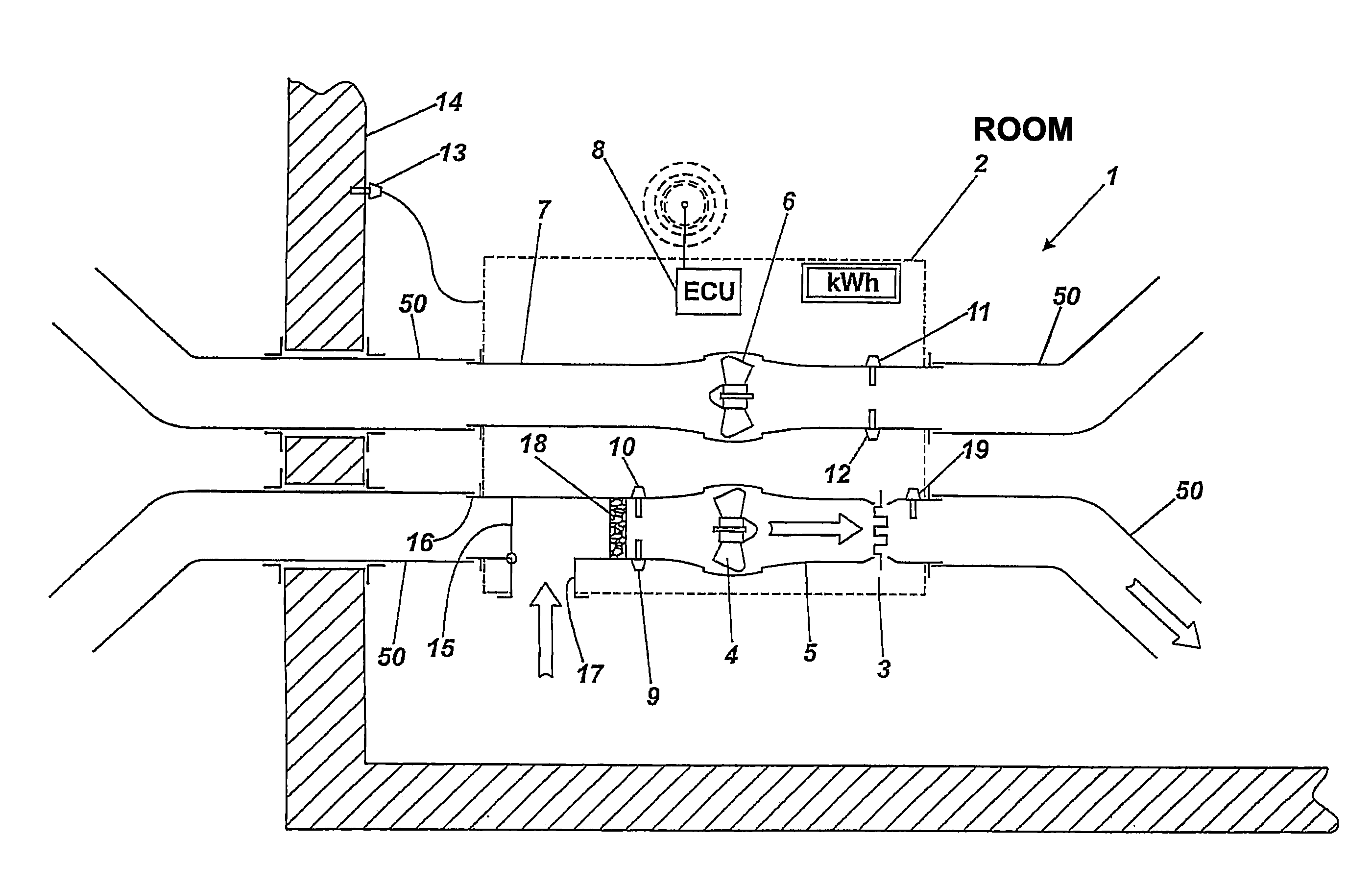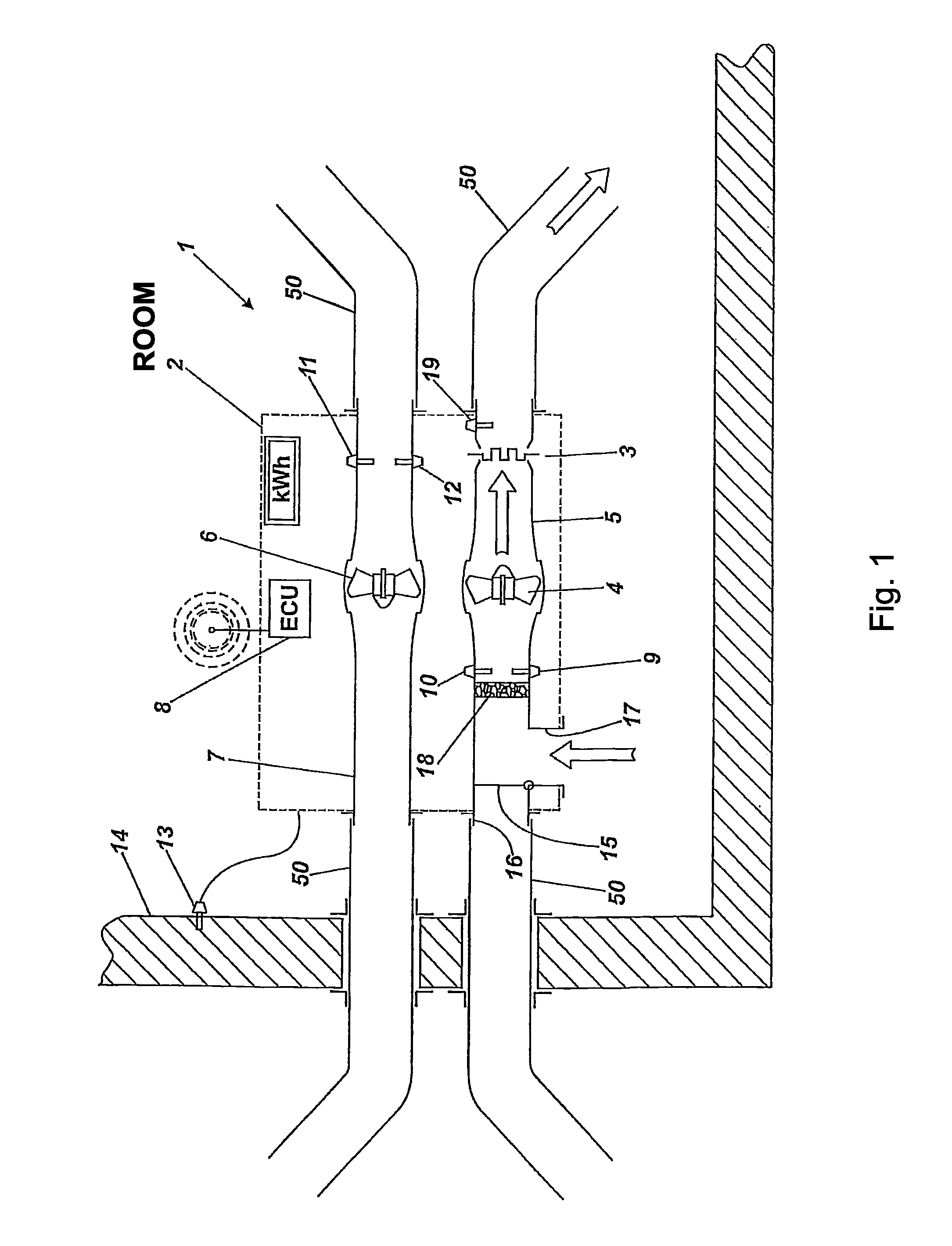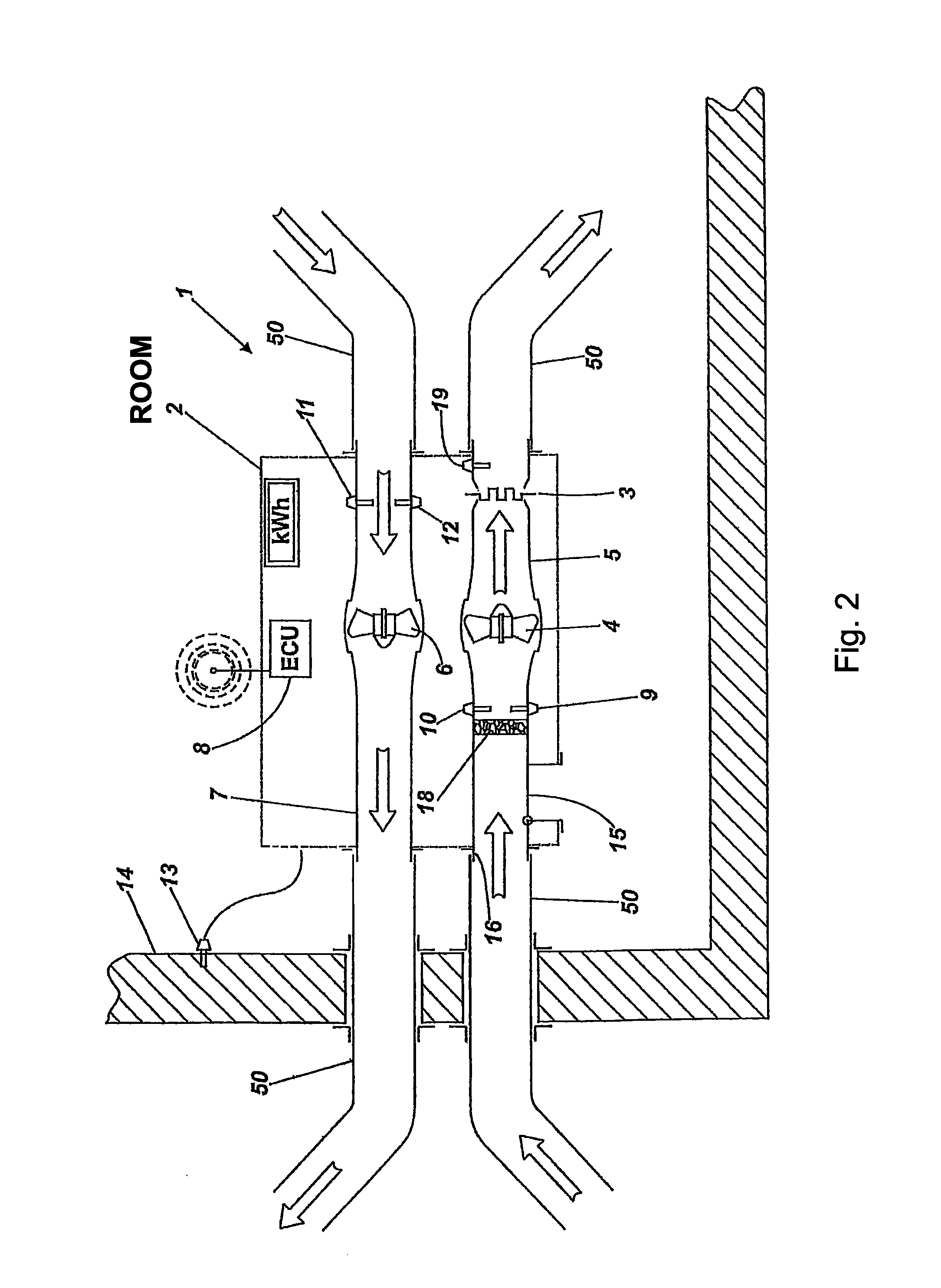Drying of water damaged buildings
a technology for damp or water damaged buildings and drying methods, applied in drying, lighting and heating apparatus, furnace types, etc., can solve the problems of secondary damage, prolonged drying, inefficiency of refrigerant and desiccant technology, etc., and achieve the effect of improving the efficiency of drying methods and less latent hea
- Summary
- Abstract
- Description
- Claims
- Application Information
AI Technical Summary
Benefits of technology
Problems solved by technology
Method used
Image
Examples
Embodiment Construction
[0034]Turning to FIG. 1 there is shown a schematic view of part of a waterlogged room to be dried in accordance with the method of the invention in which drying apparatus shown generally at 1 includes a heater housing 2 containing a heater element 3 and inlet fan 4 housed within an inlet duct 5 as well as outlet fan 6 and outlet duct 7, collectively by which heated air may be circulated within the room and exhausted from it when required.
[0035]The apparatus 1 also includes an electronic control unit (ECU) 8 which monitors sensed signals from a temperature sensor 9 and a humidity sensor 10 upstream of the air intake fan 4 as well as exhaust temperature sensor 11 and exhaust humidity sensor 12 upstream of the exhaust fan 6. In addition, the ECU 8 also monitors via a wall-mounted humidity or conductivity sensor 13 the amount of water in the wall 14 of the room being dried. Sensor 13 or further sensors may be mounted anywhere in the room, for example on the floor or on the ceiling. Cont...
PUM
 Login to View More
Login to View More Abstract
Description
Claims
Application Information
 Login to View More
Login to View More - R&D
- Intellectual Property
- Life Sciences
- Materials
- Tech Scout
- Unparalleled Data Quality
- Higher Quality Content
- 60% Fewer Hallucinations
Browse by: Latest US Patents, China's latest patents, Technical Efficacy Thesaurus, Application Domain, Technology Topic, Popular Technical Reports.
© 2025 PatSnap. All rights reserved.Legal|Privacy policy|Modern Slavery Act Transparency Statement|Sitemap|About US| Contact US: help@patsnap.com



